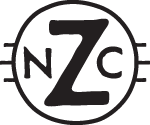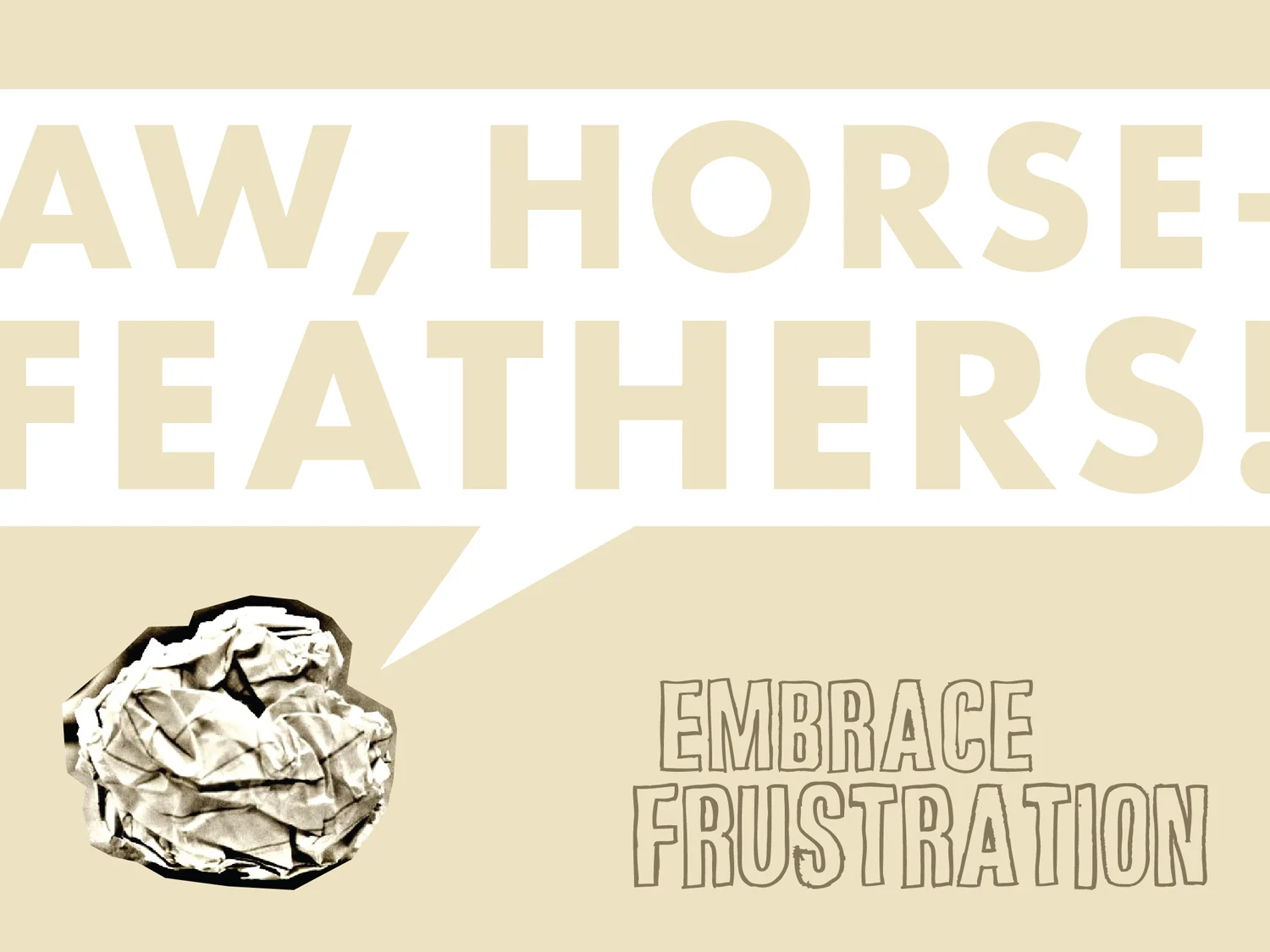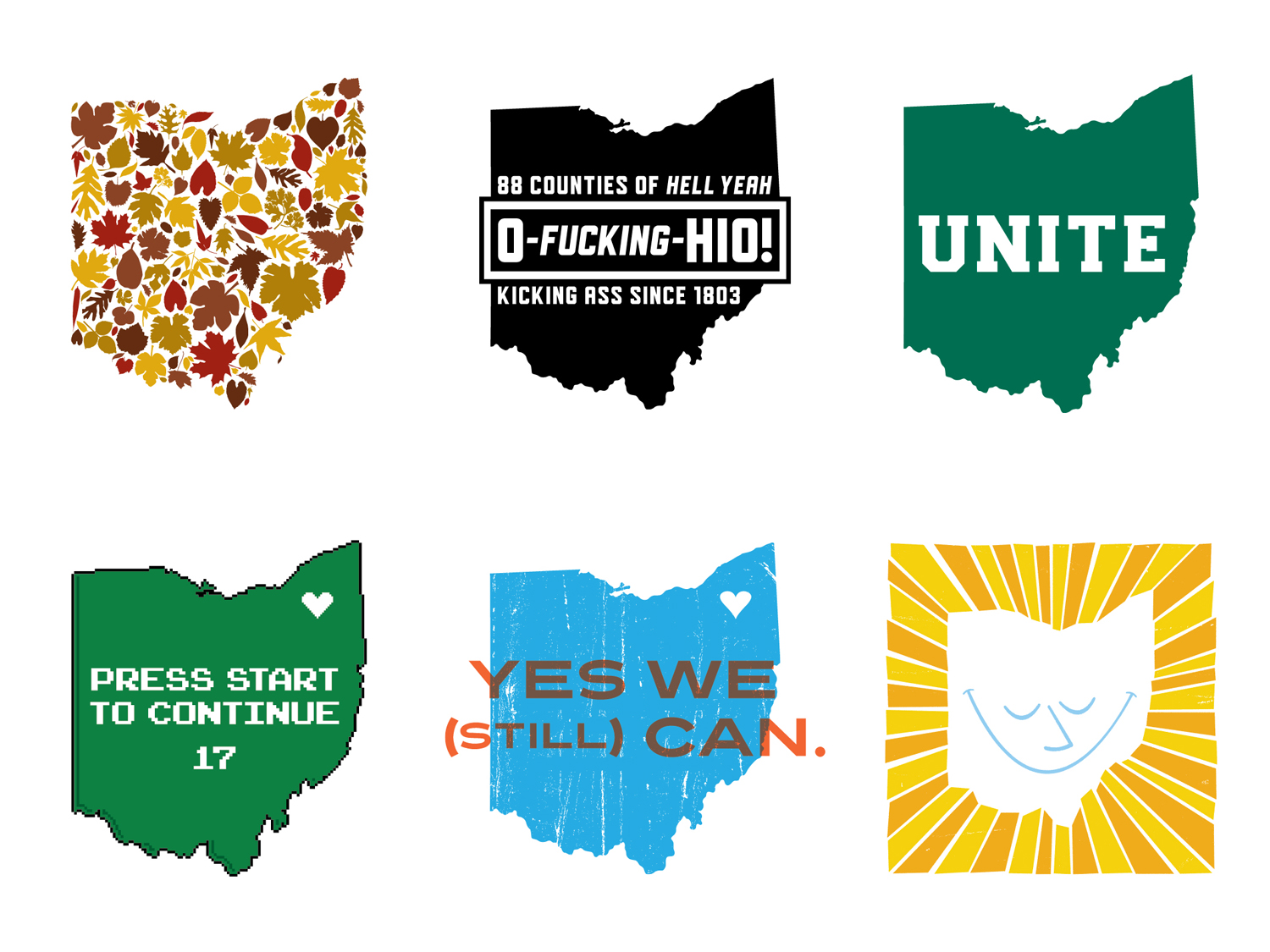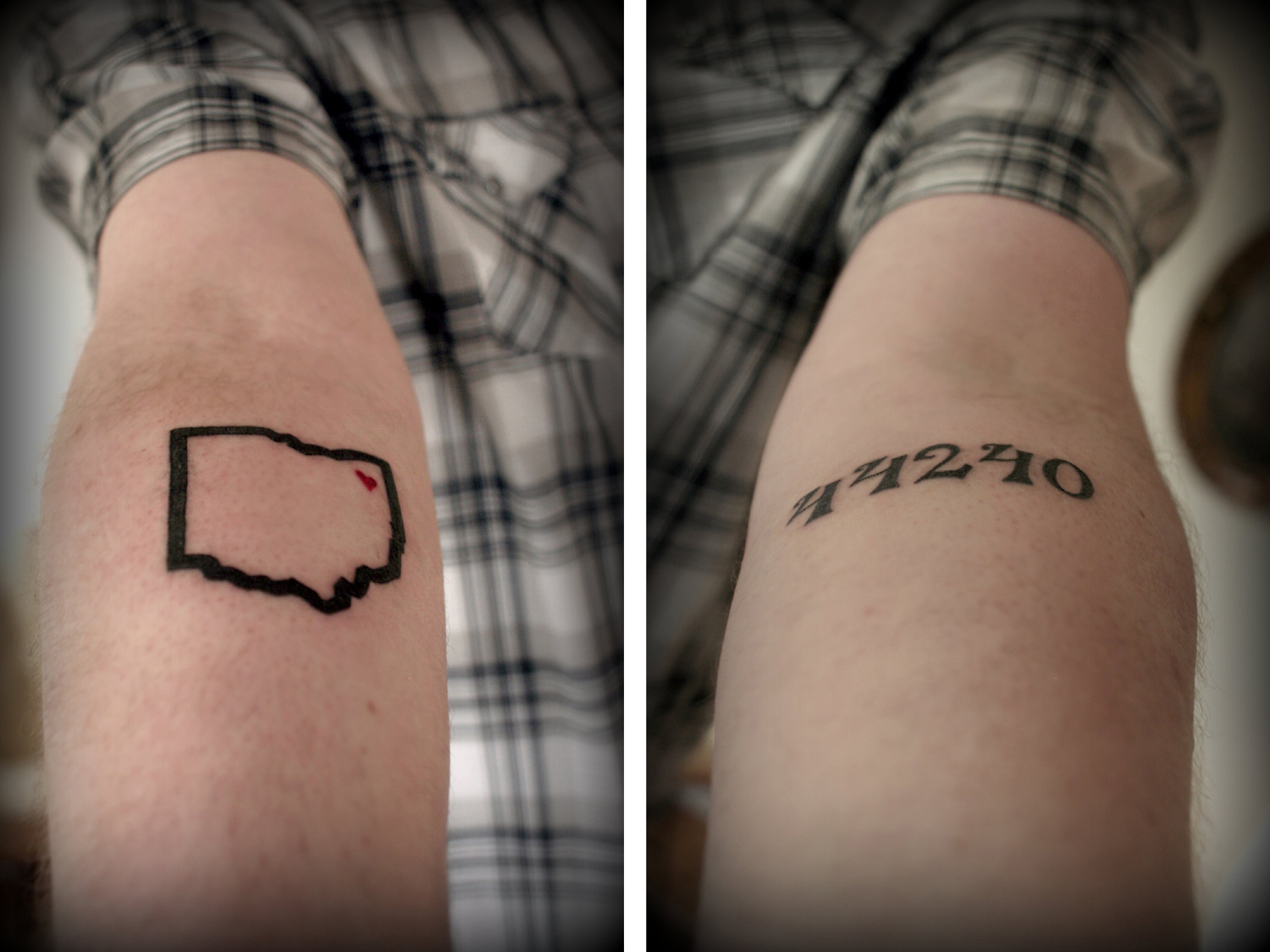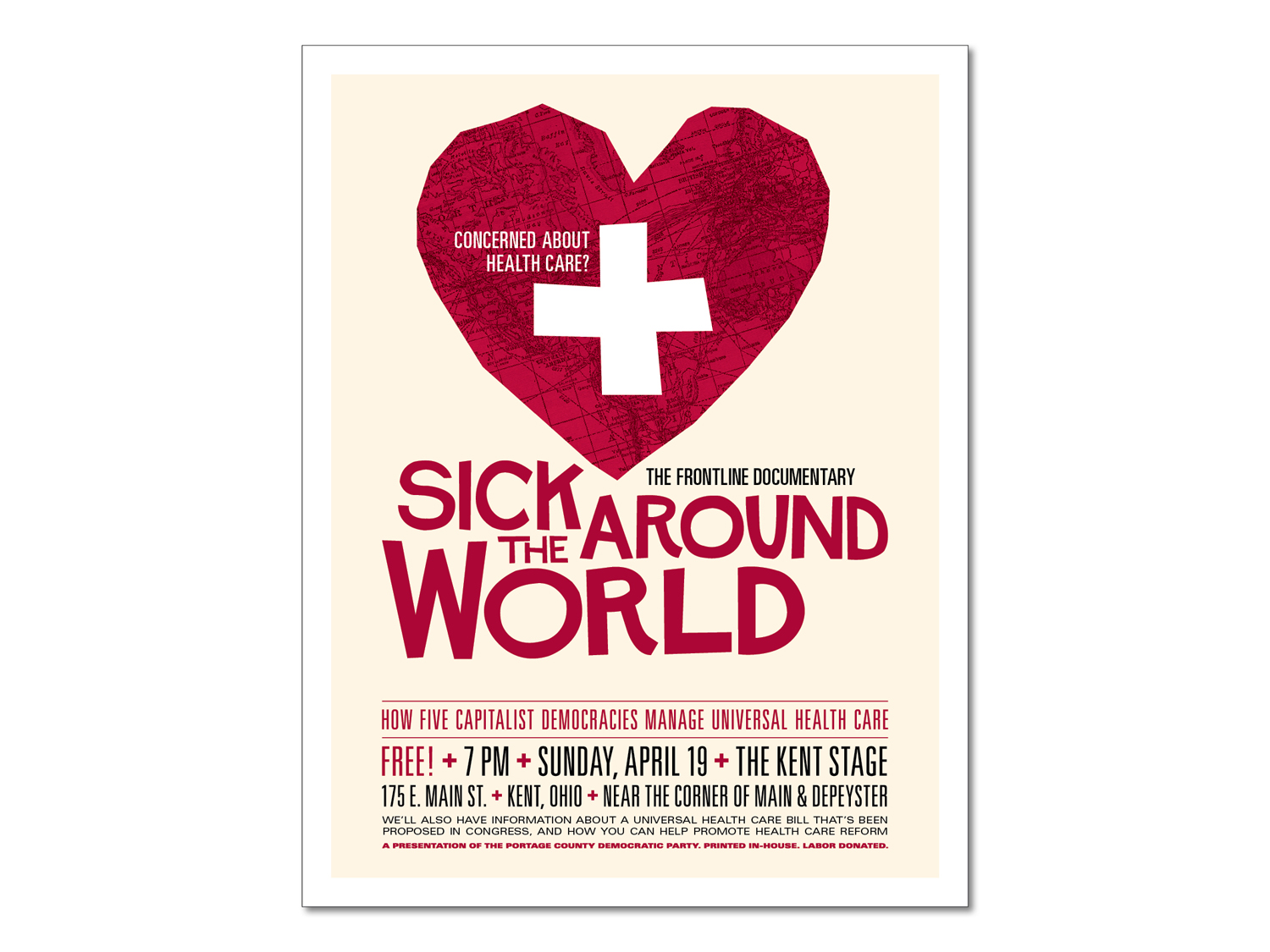Embrace Frustration
What follows is my speech (and the accompanying slides) from the 2011 edition of Weapons of Mass Creation Fest in Cleveland.
Who am I?
Hello, I'm Joseph Hughes. Some of you know me. A lot of you don't. Maybe you know me from Melamed Riley, where I'm an art director. Or from Northcoast Zeitgeist, where my wonderful wife Casey and I write about our passions and I get to design all sorts of things with the F-word on them. Maybe you bought something I made. Or read something I wrote. Or saw something I designed.
But here are a few things you probably don't know about me. I spent nearly ten years figuring out whether I wanted to be a designer or a writer. I struggled for at least half that time with the self-doubt that results when who you think you are collides with who other people think you are. Namely, the attitude that what makes you a good designer is having a degree in design. Or the notion that you should just be happy with any job when people who have been working longer than you've been alive are being politely escorted from the building with their personal effects in a cardboard box.
What am I doing here?
My purpose here today isn't to celebrate what I've done, because it's no better than what any of you have done or are doing. It's also not to complain about the past, because everybody gets frustrated about his or her circumstances from time to time. My purpose today is to talk about designers as researchers. And how we can turn that investigative lens toward ourselves to find out why we're frustrated – and use what we find to inform our perspective, guide our work and shape our careers.
Think about how much of your time is spent researching in service to someone else: A typical identity project, for instance, comes with countless hours spent finding inspiration, assembling color possibilities, exploring type, studying industry trends and doing everything that puts you in your client’s head. Doing your homework is never a mistake. And when it pays off and your clients tell you that you delivered what they didn’t even know they wanted, it's a great feeling. A feeling that breeds positive momentum and becomes a part of what you lean on the next time self-doubt creeps in and you wonder if you've lost your edge. Well, what if you were the project?
Reflective frustration and active analysis.
What if you spent as much time analyzing yourself as you did your clients? Why are you so inspired by what inspires you? Why do you decide to pursue one layout versus another? Or, most importantly, why you are so frustrated with what's been frustrating you? Maybe you've hit a creative wall and can’t seem to get past yourself. Maybe your job sucks and isn’t allowing you to flourish. Maybe you wish you played a more active role in shaping the world around you. Whatever it is, getting to the root of these roadblocks is crucial, so instead of being angry for the sake of being angry, let’s be reflective for the sake of being productive.
This is the philosophy I try to embrace every day and the fact that I am able to speak to you tonight is proof that this way of working can be fruitful for your career. For the remaining time that I have, I want to illustrate this process of reflective frustration and active analysis using my own career as an example. The story I am about to tell has come from many years of being both frustrated and inspired – and analyzing the source of that frustration and inspiration to understand who I am and, most importantly, who and where I want to be.
Intrinsic struggle.
Let’s begin with intrinsic struggles, the frustrations that originate from within. Chiefly for me throughout my career has been the self-doubt that resulted from not having a degree in design. Fact is, I never went to school for it. My background is actually in journalism. I spent several years working in related fields until I finally realized that what I was so passionate about – design – was what I wanted to pursue as a career. But not having an arts degree is something that has, for most of my working life, held me back professionally and frustrated me personally. At its worst, it's kept me from thinking I had what it takes to hack it in the real world. Which is a very corrosive attitude, because how can we expect people to trust us as communicators if we can't trust ourselves, right? The depths of this fear would sometimes come with me feeling like something I designed was only complete when it surprised me that I could produce something that looked that good.
Motion designer Nick Campbell has talked about these very frustrations. Campbell struggled with the feeling that if he just kept trying to get better each day at design, it would all eventually fall into place and his work would be flawless. But he learned that day never comes, and simply recognizing you're not where you need to be on a given project is a very good sign. “Just the fact that you know it doesn't look as good as it could be is really what makes a good designer," he said. "Don't fret if your work isn't up to your standards. That's a good thing. That means you're always struggling and trying to be better."
What Campbell is saying is that you're never going to be perfect. So stop spending so much time trying to be and instead focus on always getting better. And what I am saying is that the struggle is just as important as the final product. Embrace that struggle. Learn from it. Let it teach you about yourself. For the longest time, I wasn’t letting that happen. When I felt my work wasn't up to snuff, I beat myself up. A lot. And it persisted until I took the time to look at myself with the same sense of curiosity I did my clients and asked myself the same types of questions I was asking them.
So, why was I beating myself up, then? Was it really because my work wasn't good enough? Or was it something else? I started with the lack of degree. Even though I knew having an arts degree would open so many previously closed doors, it just wasn't feasible at the time. I realized I didn’t have the money or time to do anything about it, so I turned it around. My perceived weakness was my new strength. I stopped caring about what people thought about my background. Where I wanted to go was going to be more important to me than where I have – or haven’t – been. I vowed to out-hustle every single designer I ever encountered who was wasting their degree by not giving it their very best every second. I also vowed to lean on what I actually did go to school for – writing – to give me an edge. If our clients expect us to make the most out of the resources we have at hand, it was equally important for me to maximize my own personal resources.
I dug deeper. When I did, I got to the root of other things that were holding me back. It didn’t take long to recognize how easily distractible I was. The problem only compounded itself when you coupled it with the fact that, when I worked, I was surrounding myself with all manner of stimuli. So many things competed for my already short attention span, all of which got in the way of my workflow. So, to help remedy this, we sold our TV and haven’t looked back. In another manifestation of this cure for distraction, we also rid our house of the kinds of “stuff” you accumulate that ends up binding you in place.
This physical unburdening also reminded me to never surround myself solely with the trappings of the design world, either. There’s so much inspiring work out there that it’s easy to spend more time looking than creating. I realized the more captivating design I encountered, the more I began to question my own abilities, which kept me from making things myself. We also tend to isolate ourselves by only talking to each other and designing for each other, building an echo chamber that can hold us back. My immediate response to feeling both overwhelmed and hemmed-in by design was to seek out more varied interests and influences, like politics, urban planning, the environment, books, music. The best part came in discovering how easy it became to meld my growing passions, making me both a better designer and a more well-rounded person. A win-win born from frustration.
External barriers.
Not every struggle comes from within, though, so this reflective frustration approach warrants analysis of external barriers, too. Although I'm loving every minute of my 9-to-5 at Melamed Riley, I'd rather talk about how I felt five years ago. I was the designer for Cleveland's convention and visitors bureau. I went into my yearly review feeling good and with no idea what was about to happen. Despite the fact I had lost many coworkers in the months prior due to downsizing, I remained quite unaware. When they told me they no longer needed my services, I felt like I was on a roller coaster suddenly out of control and headed down the first steep hill. Again and again, they said that my performance had nothing to do with my being laid off, though it's hard not to take losing your job personally.
For the longest time, even after I had secured temporary freelance work, I looked back, trying to diagnose what had happened. Was it because I wasn't good enough? Was it because I didn't play the game? Was it because I wasn’t working hard enough? Was I choosing the proper career path given my education? The more questions I asked, the more self-doubt crept in, and I started to feel like I was stuck in quicksand and I'd be a temp forever. Sure, I applied to many jobs and interviewed at more than a few, but the frustration with either not hearing back or making it only so far in the process started to weigh on my confidence. Worse, I felt myself getting used to not working, and the complacency was stifling my creativity.
By the time my freelance work at one agency turned into a full-time gig, it had been more than a year-and-a-half between steady jobs, a stretch broken up by temping but never completely filled. I had been several places and had worked enough to stay afloat, but was never comfortable enough at any given place to feel a part of a team. I needed a full-time job and wanted to recapture the routine of daily work, so I ended up taking a job in production with less pay and fewer responsibilities than I wanted. I could have let that really keep me down, but I quickly realized it was a source of external frustration I could learn from and use to my advantage to figure out who I was and who I wanted to be.
I was there early and stayed late. I asked questions and spoke up. I raised my hand and stepped up. When they needed the job by noon, they got it first thing in the morning. When the creative department asked me to chip in on a logo design, I gave them pages of options. When the proofreader was sick, I filled in. When someone new arrived, I gave them the training that I never got. I asked for additional training myself. I volunteered to help shape new business pitches. Above all else, I gave a damn. And never let myself feel satisfied with how I was doing. I was never going to give anyone the opportunity to think that I wasn't up to the challenge.
I put everything I had into that job, but when I still felt unfulfilled, I tried to find a solution to my growing frustrations. One persistent frustration came built into my job description. As a production artist, I was learning quite a bit about an important aspect of our trade. On the flip side, however, I was no longer able to truly personalize my work. In fact, some of my most frequent jobs involved making simple copy changes, often as mindless as replacing a period with a comma. I needed an outlet. Northcoast Zeitgeist itself was a direct result of those feelings. I was long overdue for a portfolio site, and Casey – who gets full credit for naming us – wanted an outlet for our thoughts on design, photography, culture, our home projects, our lovely town. Basically, whatever interested us at the moment.
A related frustration was that my job lacked a local focus, Sure, we were located in Cleveland, but our office was part of a much larger network whose out-of-town headquarters called all the shots. So after hours, I started designing things that reflected the pride I take in being from Ohio. The more I did, too, the more I connected with my home – and with many of the people working hard to make Ohio a better place. A lot of whom are here tonight. I found that the work resonated with others, which led me to begin selling pro-Ohio products at places like Native and Room Service, here in Cleveland, and at Wholly Craft in Columbus. The pride-in-place even found its way to my arms.
As struggles would arise, I fought back by trying something new and looking to learn and grow along the way. I’ve always loved environments where teamwork dominated, so it was hard to adjust to a climate like my former employer that was very isolating. Creative was creative. Production was production. And that was that. What I couldn’t change during the day I fixed at night by working with other creative friends on both self-initiated and commercial projects. One productive collaboration came when I worked with my friend Mikey Burton – whom you’ll be hearing from next – on designs for my favorite band, Wilco. Mikey, who has worked with Wilco on many occasions, got several posters out of the project, and I was excited to be able to complete a t-shirt design for the band. But nothing would have happened for me had I not acted on what was frustrating me.
When I felt there was too much distance between what I was doing and the craft of design, I sought out Keith Berger from Cranky Pressman to get my hands dirty in letterpress. We set up a time to visit his shop in Salem. I would have been happy to just haul paper around and help Keith do his job, but he went out of his way to show me the ropes and work as a team. We finished what became the Cranky Pressman commemorative letterpress calendar over the course of two fruitful days. The note on the calendar’s back, which read “100 Percent Pixel Free,” was a tribute to what originally drove me to Keith. So it made perfect sense that, when I felt the urge to take a crack at magazine feature writing late last year, Cranky Pressman would be my subject. The profile of Keith and Cranky was the May cover story of HOW.
Still, something was missing. When I stepped back, I realized I was very fulfilled design-wise. I was processing my frustrations and felt lucky to have the kinds of after-hours opportunities I was enjoying. I looked at the intent behind what I was doing – the site, the Ohio pride, the partnerships, getting my hands dirty – and discovered that, in one way or another, I was just trying to make an impact. Which is what anyone wants, right – to make a difference?
At the time, one of the most immediate ways to do so and respond to my frustrations was to start working with the Obama campaign. It was one of the most rewarding decisions I’ve ever made. Casey and I spent countless hours working to increase student involvement at Kent State University. We hosted meetings, canvassed and, best of all, I was able to combine my passions for design and politics. The kinds of things I designed for the campaign were simple, but I felt like what I was doing mattered. I’ve never been more energized about design – or the people around me. The themes of our campaign – respect, empower and include – have proven as equally valuable in my life after the election as they were before it.
In the end, I was getting to do some really engaging things after hours, but I still felt like I was running into a wall during the day. By then, I had become responsive enough to my frustrations to know that, no matter how hard I tried, my job was never going to give me the things I had learned were most important to me. It had also taken me that long to realize that there are some situations you simply cannot change. I wanted a new challenge, but grew fearful of taking a leap of faith. Sure, I wasn’t happy. But I knew I was up to the job and was hesitant to leave given how many colleagues had already lost their jobs due to downsizing. Hesitation, however, hadn’t been what had worked in the past when I faced frustration. Action had. So when I learned of an opening at an organization that shared my values and presented a unique challenge, I went for it. And I’ve never been happier.
Turn it around.
There's no magic formula to getting what you want out of your career. But trust me, if there were, it wouldn't look like the glossy how-tos you see in bookstores. The truth is, you already know the formula. You’re following it every day when you work with clients. With them, you’re asking the right questions. Doing the proper research. Examining your decisions. Acting based on your hard work. Just turn it around. Become your client. Ask yourself the questions. Put your successes and struggles under the microscope. Learn about yourself and move based on what you find. You’ll discover that what you previously considered roadblocks eventually become opportunities. Each bump in the road becomes another chance to learn something new about yourself. Never let anything get in the way of curating the kind of creative life you want. When you reach that balance between hustle and reflection, great things happen.
But nothing happens if you don’t do something. Austin Kleon makes an important point when he says creativity is subtraction. It’s what you leave out, shut out or abandon, he says, that can lead to interesting work. Implicit in that is the kind of reflection I’ve discussed. But reflection and analysis only got me so far. It was up to me to take the next step. So creativity isn’t just subtraction. Creativity is also action. I identified and studied what frustrated me, yes, but without acting on what I found, I’d probably still be putting in long, unfulfilling hours at my last job and daydreaming about nights like tonight.
Whatever you do, don’t let your frustrations get the best of you. It’s easy, I know. It happened to me. But I refused to let it fester and bring about complacency. Complacency breeds laziness. Not sweating the details. Thinking the world cares what you have to say just because it’s you saying it, not because you’ve earned it. All bad things brought about by indifference toward your frustrations. And all things that stifle your potential to leave this world a little better than you found it. Your design education doesn't stop, nor does it always take place at the most convenient times. Sometimes, as was the case with me, it takes place when you're at your lowest and you feel like you're getting your ass kicked out there. Maybe you are. But what you do next is crucial. Not just for you. For the rest of us, too.
The results of facing down your frustrations won’t become obvious overnight. Look no further than my story to see what I mean. Like anything worthwhile, it’s a process that takes time. Simply recognizing that there may be something more to what’s frustrating you is an important first step. When you leave tonight, try to isolate one thing that you know frustrates you and ask yourself the questions that will start you on the path toward positive change. I’m so grateful to Jeff and everyone at WMC Fest to have been able to add my perspective and truly honored to share the stage with so many friends and heavy-duty talents. I’ve been so inspired by what I’ve seen this weekend and I know we can all do great things when we take the time to remain open-minded and committed to our creative evolution.
Thank you.
